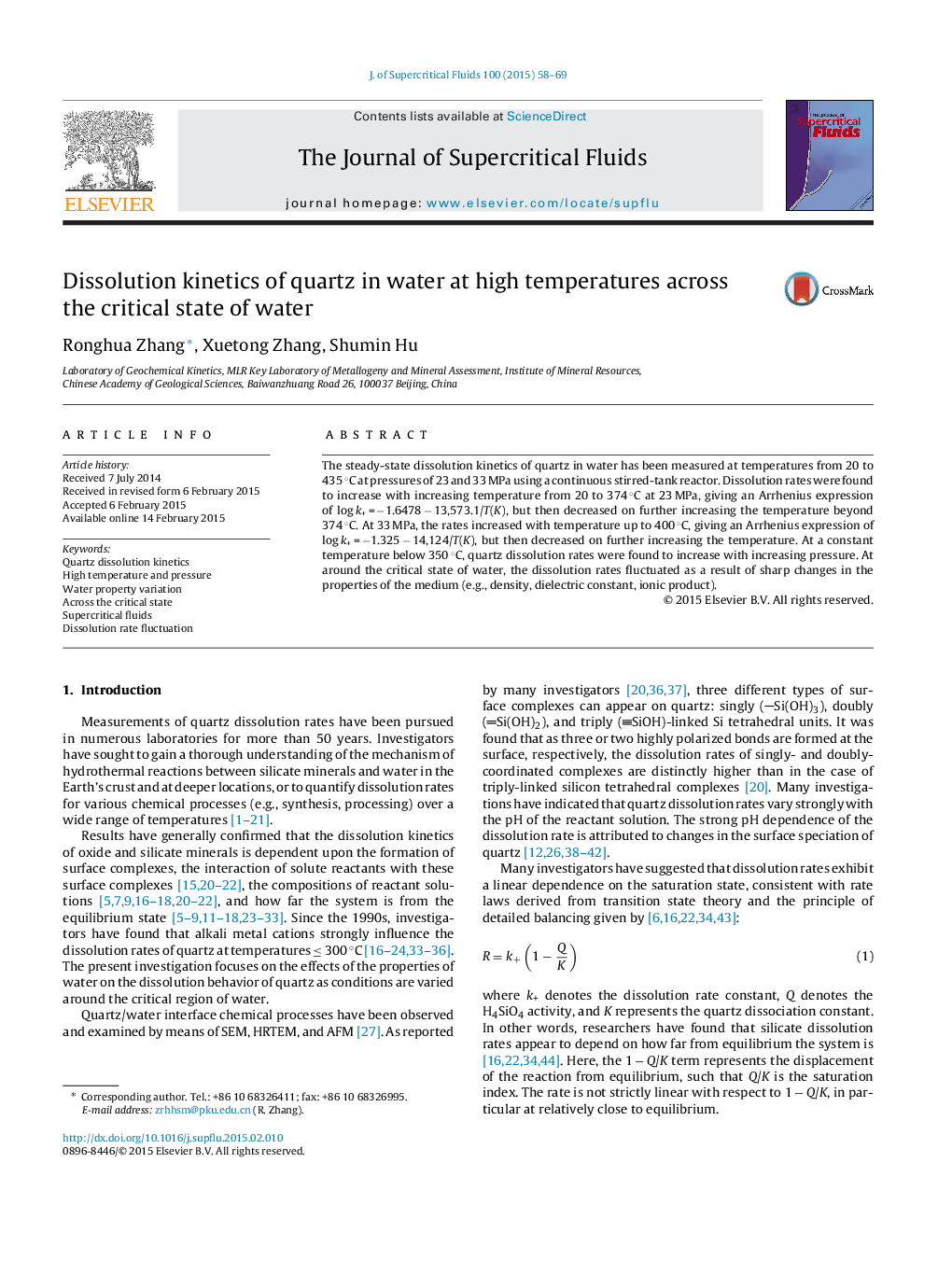| Article ID | Journal | Published Year | Pages | File Type |
|---|---|---|---|---|
| 230145 | The Journal of Supercritical Fluids | 2015 | 12 Pages |
•Quartz dissolution rates increase with temperature up to 374 °C then decrease.•Across the critical state, water density and dielectric constant drop rapidly.•Breaking hydrogen bond, water becomes capable of dissolving SiOSi bond.•Lowering water density, dielectric constant, ionic product causes rate decrease.•At a fixed temperature, dissolution rates increases with increasing pressure.
The steady-state dissolution kinetics of quartz in water has been measured at temperatures from 20 to 435 °C at pressures of 23 and 33 MPa using a continuous stirred-tank reactor. Dissolution rates were found to increase with increasing temperature from 20 to 374 °C at 23 MPa, giving an Arrhenius expression of log k+ = −1.6478 − 13,573.1/T(K), but then decreased on further increasing the temperature beyond 374 °C. At 33 MPa, the rates increased with temperature up to 400 °C, giving an Arrhenius expression of log k+ = −1.325 − 14,124/T(K), but then decreased on further increasing the temperature. At a constant temperature below 350 °C, quartz dissolution rates were found to increase with increasing pressure. At around the critical state of water, the dissolution rates fluctuated as a result of sharp changes in the properties of the medium (e.g., density, dielectric constant, ionic product).
Graphical abstractFigure optionsDownload full-size imageDownload as PowerPoint slide
